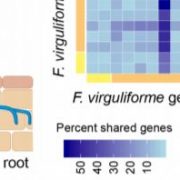
To Be or Not To Be Pathogenic: Transcriptional Reprogramming Dictates a Fungal Pathogen’s Response to Different Hosts
Research, The Plant Cell, The Plant Cell: In BriefThe fungal pathogen Fusarium virguliforme invades a wide spectrum of host plants, ranging from eudicots to monocots. Interestingly, fungal root colonization results in disease-producing phenotypes only in certain eudicot hosts (Kolander et al., 2012). For instance, F. virguliforme causes sudden death…

First Author Profiles
Blog, Pubs PagesHave you recently published an article in The Plant Cell, Plant Physiology, or Plant Direct as the first author? If you have, I hope you’ve taken the opportunity to send me your profile! For the past couple of years, we’ve been helping our first authors get the word out about themselves and their…

Promoting the value of publishing in society journals: Perspective from ASPB
Blog, Pubs PagesWith the rise of high-impact commercially published journals in recent years, journals published by learned societies face greater competition than ever before. While many society journals are among the highest-impact titles in their fields, making them top choices among scholars, for societies it is…
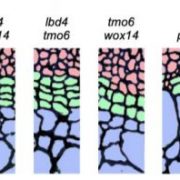
The Shape of Rings to Come: Systems Approach to Xylem and Phloem Formation in Arabidopsis
Research, The Plant Cell, The Plant Cell: In BriefPlants have veins too. As in animals, the plant vasculature facilitates the circulation of water and nutrients across tissues and organs. Unlike animals, it originates from a self-renewing population of meristematic cells forming the (pro)cambium ring within stems and tree trunks and roots. Local signals…
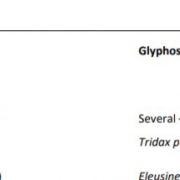
Enhanced Metabolic Degradation: The Last Evolved Glyphosate Resistance Mechanism of Weeds?
Plant Physiology, Plant Physiology: News and Views, ResearchFor the past two decades, glyphosate has been the most used herbicide worldwide, resulting in prolonged, extreme selection pressure for glyphosate-resistant (GR) weeds. Glyphosate’s only target as a herbicide is 5-enolpyruvylshikimate-3-phosphate synthase (EPSPS), an enzyme of the shikimate pathway. …

Differential modulation of the pathogen transcriptome by distinct hosts
Research, The Plant Cell, The Plant Cell: In a NutshellBaetsen-Young et al. identified key transcriptomic differences in coexpression networks following Fusarium virguliforme infection of symptomatic (soybean) vs. asymptomatic (corn) hosts Plant Cell https://doi.org/10.1105/tpc.19.00697
By Amy Baetsen-Young and Brad Day, Michigan State University
Background:…
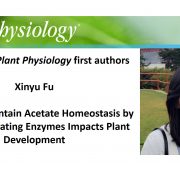
Recognizing Plant Physiology authors: Xinyu Fu
Plant Physiology, Plant Physiology: Author ProfilesXinyu Fu, first author of Failure to Maintain Acetate Homeostasis by Acetate-Activating Enzymes Impacts Plant Development
Current Position: Post-doctoral Research Associate, Plant Research Laboratory, Michigan State University
Education: Ph.D. in Plant Biology (Minor: Statistics) from Iowa State…
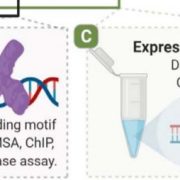
A novel upstream regulator of trichome development inhibitors
Plant Physiology: News and Views, ResearchMuch like the spikes that deter birds from sitting on fences, trichomes — hair like projections on the leaf surface — are the epidermis’ first line of defence, discouraging insects and other pests (Levin, 1973). In addition to their role protecting the plant, trichomes are an excellent marker to…

The Evening Complex of the Circadian Clock and Chromatin
Plant Physiology, Plant Physiology: On The InsideThe circadian clock generates endogenous biological rhythms with periods of ~24 h. Circadian transcription allows the molecular anticipation of the environmental cycles, which improves plant fitness and adaptation. Consistent with its adaptive function, the circadian clock is subject to multiple layers…

